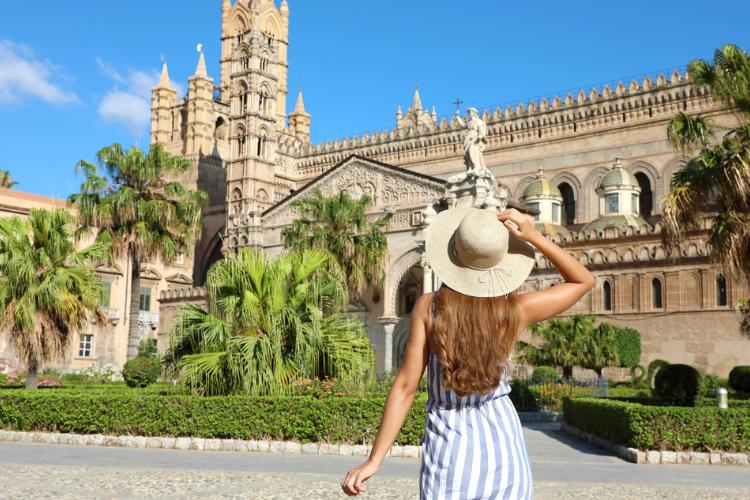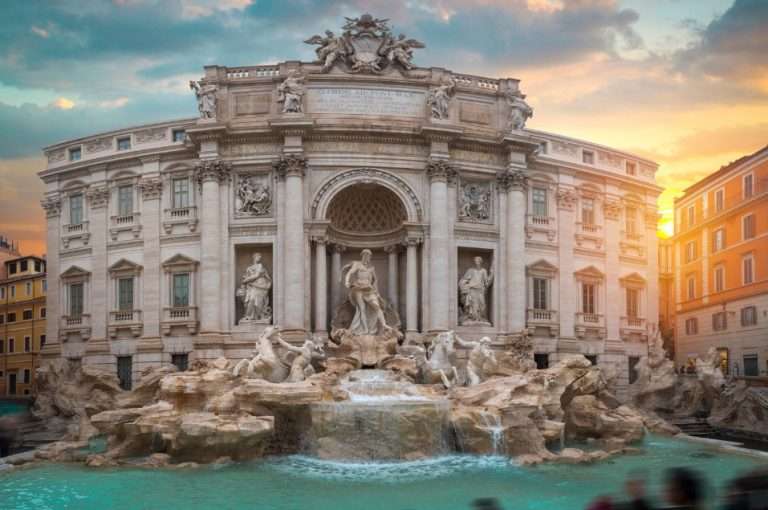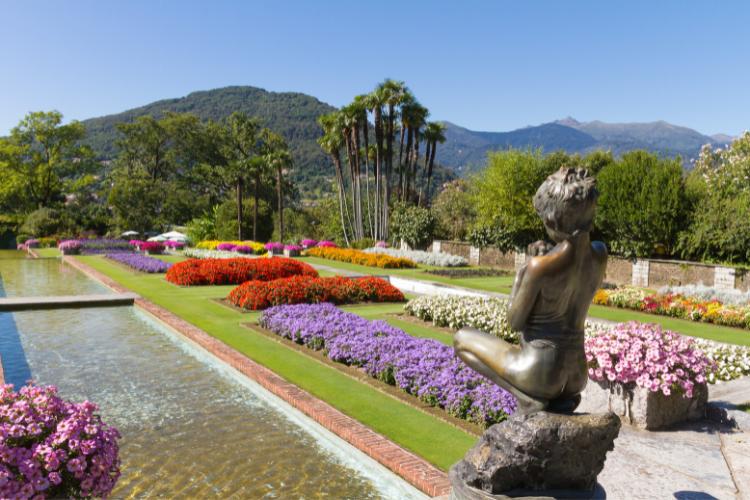7 UNESCO Sites in Sicily: Must-See World Heritage Gems
Ciao, adventure enthusiasts! It’s me, Max, your go-to guide for all things Italian. If you’re searching for the complete list of UNESCO sites in Sicily, you’ve landed in the perfect spot.
Today, we’re journeying to the heart of the best Sicily UNESCO sites, a vibrant tapestry of rich history and artistry. From the majestic Mount Etna to the vibrant corridors of Palermo, I’ve got the keys to unlock these mesmerizing treasures. Let’s unveil the enchanting secrets nestled in these heritage sites together!
This post contains affiliate links. When you buy something through one of the links on our site, we may earn an affiliate commission at no additional cost to you.
What is UNESCO and Why is it Important?

UNESCO, or the United Nations Educational, Scientific, and Cultural Organization, is quite the guardian angel of our world’s most precious gems. This remarkable entity identifies and protects places of immense cultural and natural importance, giving them the recognition and preservation they deserve.
In the case of our beloved Sicily, this translates to safeguarding sites brimming with history, tales, and artistry, encapsulating the very essence of this vibrant island.
So, as we venture through the UNESCO sites in Sicily, know that we are stepping into spaces that hold stories echoing through centuries, etched into the very stones and landscapes surrounding us.
Sicily UNESCO World Heritage Sites Map
Utilize the map below to pinpoint the UNESCO World Heritage Sites in Sicily.

Ready to explore? Let’s unearth the marvels that Sicily has proudly secured a spot for in the world heritage list.
Agrigento Valley of the Temples

⭐ UNESCO LISTED IN: 1997
👉 BOOK A TOUR
Let’s turn our gaze towards the sun-kissed southern coast of Sicily, where the ancient city of Agrigento stands as a silent witness to bygone eras. Holding a prestigious place in the Italian UNESCO World Heritage sites since 1997, this expansive archaeological haven sprawls across a staggering 1300 hectares, eagerly waiting to share its tales encapsulated in stone and time.
The beating heart of Agrigento is undoubtedly the renowned Valley of the Temples. In this realm, the echoes of ancient Greece resound amidst well-preserved ruins.
It’s a place where you can practically feel the whispers of history narrating tales through the columns and remnants of Doric temples, sanctuaries, and ancient structures, each holding secrets of a long past yet gloriously immortalized here.
Interestingly, one can’t miss the majesty of the Temple of Concordia, a 5th-century BC marvel renowned for its exceptionally well-kept structure and columns defying time. Standing proudly, it offers a glimpse into an ancient civilization’s aesthetic prowess and spiritual devotion.
The Temple of Hera Lacinia, dedicated to the goddess overseeing marriage and childbirth, holds its ground as a significant site, sharing space with the majestic yet partially ruined Temple of Olympian Zeus.
Even in its current state, it commands awe, reflecting an ambitious vision that once sought to rival the grandeur of the Temple of Artemis in Ephesus. As we wander Agrigento, it’s akin to stepping into a living museum, a vivid tapestry of history that continues to enchant visitors with its timeless allure.
Arab-Norman Palermo, including Monreale Cathedral and the Duomo in Cefalù

⭐ UNESCO LISTED IN: 2015
👉 BOOK A TOUR
Dive into a mesmerizing historical tapestry at Arab-Norman Palermo, a UNESCO World Heritage Site since 2015 that artfully embodies a confluence of Arab, Byzantine, and Norman influences over the centuries. Situated in the cultural heart of Sicily, this awe-inspiring destination brings to life a vivid picture of the island’s vibrant past.
A remarkable ensemble of nine edifices awaits, crafted during the golden era of the Norman Kingdom of Sicily (1130-1194), most notably under the auspices of Roger II.
This period is hailed for nurturing a harmonious blend of cultures. Muslims, Byzantines, Latins, Jews, Lombards, and the French united to erect architectural masterpieces that resonate with collaborative spirit and innovation.

The site encompasses two magnificent palaces: the grandiose Palazzo Reale (also known as Palazzo dei Normanni), which houses the mesmerizing Cappella Palatina, and the historic Palazzo Zisa.
You can also marvel at the pristine churches – San Giovanni degli Eremiti, Santa Maria dell’Ammiraglio, and San Cataldo, each boasting unique designs and serene atmospheres.
Adding to the region’s splendor are the majestic Cathedral of Palermo, the emblematic Ponte dell’Ammiraglio bridge, and the cathedrals of Cefalù and Monreale, renowned for their captivating and well-preserved mosaics that tell the tales of Sicily’s grand history.
As you wander through this rich historical panorama, the artistic narrative and enduring beauty of Norman Palermo UNESCO sites promise an immersive journey into a harmonious chapter of Sicily’s rich and varied heritage, captivating the hearts of visitors for generations to come.
Syracuse and the Necropolis of Pantalica

⭐ UNESCO LISTED IN: 2005
👉 BOOK A TOUR
Brace yourself as we step back in time, venturing into the captivating realms of Syracuse and the Rocky Necropolis of Pantalica, a region pulsating with rich layers of history. This Sicily UNESCO site is like a living museum showcasing a remarkable architectural and historical heritage tapestry.
In this vibrant city that once rivaled Athens in its grandeur, every corner tells a story of its diverse rulers – the Greeks, Romans, Arabs, Normans, and Italians. Their influences have seamlessly blended, leaving an indelible mark on Syracuse’s personality, making it a melting pot of cultures.
Now, let’s focus our gaze on the Neapolis Archaeological Park, a treasure trove nestled within this site. Here, you’d be spellbound by the Greek Theatre’s grandeur, the Roman Amphitheater’s might, and the unique acoustic marvel of the Ear of Dionysius, a natural limestone wonder.
As we wander a bit more, we find ourselves in Ortygia Island, the beating heart of Syracuse, where the echoes of the ancient world resonate in its charming piazzas and winding alleys, beckoning you to lose yourself in its alluring labyrinth of history.
It’s a visit and a vivid journey through the timelines, where the essence of bygone eras still lingers, whispering tales of magnificence and splendor. Prepare yourself for a deep dive into Syracuse’s rich history, where time seems to have woven a rich tapestry of architectural and cultural tales.
Mount Etna

⭐ UNESCO LISTED IN: 2013
👉 BOOK A TOUR
Let’s continue with one of the crowning jewels among Sicily’s UNESCO Sites – the ever-magnificent Mount Etna. This celebrated icon of the Italian UNESCO World Heritage sites list is a living testament to the rich geological, scientific, and cultural narratives that Sicily embodies.
In all its grandeur, it proudly stands as Europe’s highest and most active volcano, drawing individuals who thirst to understand our planet’s intricate workings.
Come to think of it, a venture here is more than just a visit; it’s an experience where you can witness nature in its most primal state, orchestrating a grand spectacle with complex, volcanic processes that have stood the test of time. Imagine where the earth whispers its ancient secrets, with each volcanic activity narrating tales spanning centuries.
In any case, it is pivotal in the Mediterranean bio-geographical region, offering a haven for scholars and enthusiasts to immerse themselves in a world where nature and culture intertwine beautifully.
The journey through Sicily’s UNESCO Sites would be incomplete without basking in Mount Etna’s raw, majestic presence. This site resonates with the vibrant pulse of the Earth herself.
Suggested Reading: Exploring Italy Mount Etna: 10 things to know before visiting.
Baroque Towns of the Val di Noto

⭐ UNESCO LISTED IN: 2002
👉 BOOK A TOUR
If you’ve been yearning to lose yourself in a place where architectural wonders meet timeless elegance, the Baroque Towns of the Val di Noto are calling your name.
A vacation to this picturesque corner of southeastern Sicily offers a rare chance to step back in time to an era of unrivaled artistry, which blossomed anew after the tragic earthquake of 1693. UNESCO saw the inestimable value in these towns, gracing them with World Heritage status in 2002.
Picture this: a leisurely stroll through Ragusa Ibla’s narrow cobblestone streets, surrounded by a symphony of architectural harmonies that resonate with the grandeur of the Baroque period. Each step takes you closer to the heart of a region where artistry springs to life in the intricate stonework and majestic facades that characterize each town.

The town of Noto, located in south-eastern Sicily, stands as a jewel in this regal crown. It is often dubbed the “Stone Garden” for its beautiful cascade of Baroque buildings. One can’t help but be entranced by the majestic beauty of places like the Cathedral of San Nicolò and the Palazzo Ducezio, where the spirit of the Baroque era breathes through every stone.
And then, in the heart of Modica, a visual feast awaits with iconic landmarks such as the Church of San Giorgio and the Church of San Pietro. These edifices stand as beacons of Sicilian Baroque architecture, echoing the artful craftsmanship and cultural richness that permeates the region.
Each town nestled within the Val di Noto cradles its unique charm and allure, extending a warm invitation to explore and immerse oneself in a rich tapestry of cultural heritage. As you wander through these havens of history and artistry, you’ll find that the essence of Sicily unfolds before you, revealing a world where the past gracefully dances with the present.
Villa Romana del Casale

⭐ UNESCO LISTED IN: 1997
👉 BOOK A TOUR
In the sun-dappled heart of Sicily, near the quaint locale of Piazza Armerina, you’ll find a treasure trove of ancient artistry – the illustrious Villa Romana del Casale.
This 4th-century AD marvel is a beacon of the Roman legacy nestled within the serene Sicilian landscape, offering a doorway into a world brimming with historical wonders and artistic triumphs.
You see, stepping into this villa is like embarking on a journey through time, where the exquisite canvas of Roman mosaics unfolds before your very eyes. These mosaics are not just pieces of art; they are the epitome of Roman craftsmanship, showcasing a rich tableau of daily life, mythological narratives, and daring hunting expeditions depicted in vibrant detail.
Among this captivating collection, the “Bikini Girls” mosaic vividly depicts young women indulging in athletic pursuits adorned in stylish two-piece outfits that are just as fashionable now as they were then. It’s a genuine glimpse into the leisurely pursuits of ancient times, filled with grace and dynamism.

But your journey doesn’t end here. Allow yourself to be entranced by the grandeur of the “Great Hunt” mosaic, a lively scene portraying the capture of various exotic animals in a vivid tableau. And indeed, you can’t miss the “Labours of Hercules” mosaic, where the legendary hero’s twelve monumental tasks come alive in a whirlwind of color and artistry.
A visit to Villa Romana del Casale is more than just a tour; it’s an invitation to immerse yourself in ancient Rome’s daily life and artistic pulse, experiencing firsthand the timeless beauty and ingenuity that thrived in this cultural haven. It’s not just a site to see; it’s a vibrant, living testament to Sicily’s rich tapestry of history and art.
Isole Eolie (Aeolian Islands)

⭐ UNESCO LISTED IN: 2000
👉 BOOK A TOUR
I can’t wait to whisk you away to the enchanting Isole Eolie, commonly known as the Aeolian Islands, a scattering of volcanic islands nestled in the mesmerizing blues of the Tyrrhenian Sea, merely a stone’s throw away from Sicily’s northern coast.
It’s a place where nature showcases its formidable power and awe-inspiring beauty, offering a rich playground for the curious traveler and the scholarly vulcanologist.
This archipelago isn’t just any group of islands; it’s a veritable haven of geological wonders, comprising seven primary islands – Panarea, Stromboli, Vulcano, Alicudi, Filicudi, Lipari, and Salina, along with a sprinkling of smaller islets.
Each island tells its own volcanic tale, having emerged from the depths through two distinct types of eruptions, Vulcanian and Strombolian, offering an unprecedented glimpse into the dynamic world of volcanology.
But let’s delve deeper. These islands are renowned for their geological marvels; they’re vibrant, living communities where the warm Sicilian spirit thrives amidst the dramatic natural backdrop.
These inhabited islands welcome tourists with open arms, beckoning them to immerse themselves in the island life, whether for a fleeting visit or a leisurely stay.
Suggested Reading: 70 Famous Landmarks in Italy to Visit.
The Intangible UNESCO Sites of Sicily
As we journey further into Sicily’s UNESCO repertoire, let’s pivot from the majestic structures to the vibrant cultural tapestries that resonate in the island’s traditions and culinary arts.
Here, we explore two intangible UNESCO treasures that are a testament to Sicily’s rich and diverse cultural heritage, offering a glimpse into the living essence of its vibrant community.
L’Opera dei Pupi (Sicilian Puppets Theater)

⭐ UNESCO LISTED IN: 2008
👉 BOOK A TOUR
Journey back to the early 19th century and immerse yourself in the vibrant world of Sicilian puppet theater.
This revered art form, widespread among the working classes, spins tales from medieval chivalric literature, Italian Renaissance poems, hagiographies, and infamous bandit narratives.
A distinctive feature of these performances is the impromptu dialogues crafted by the puppeteers, infusing each show with a unique, spontaneous essence.
La Vite ad Alberello of Pantelleria
This heritage site heralds the time-honored vine cultivation techniques flourishing on the island of Pantelleria.
Here, the vines are meticulously trained into a low bushy formation, a method developed to shield them from the fierce winds and promote water conservation, harmonizing with the island’s natural elements.
The Zibibbo Grape

In 2014, UNESCO recognized the cultivation and wine-making practices surrounding the Zibibbo grape, predominantly found on Sicily’s Pantelleria island, as an Intangible Cultural Heritage of Humanity.
This ancient grape variety, also known as Muscato di Alexandria, was introduced to the island by Arabs and is a crucial ingredient in the creation of Passito, a less sweet yet delightful Italian dessert wine enjoyed traditionally with biscotti.
This recognition marked the first instance of an agricultural product being included on UNESCO’s prestigious list.
UNESCO World Heritage Sites in Sicily FAQ

What are the 7 UNESCO sites in Sicily?
There are 7 tangible UNESCO sites in Sicily:
- Archaeological Area of Agrigento
- Baroque Towns of the Val di Noto
- Villa Romana del Casale
- Isole Eolie (Aeolian Islands)
- Syracuse and the Rocky Necropolis of Pantalica
- Arab-Norman Palermo and the Cathedral Churches of Cefalù and Monreale
- Mount Etna
Additionally, there are 3 intangible UNESCO sites:
- La vite ad alberello of Pantelleria (traditional bush vine cultivation)
- L’Opera dei Pupi (Sicilian puppet theatre)
- Zibibbo grape cultivation and Passito wine production on the island of Pantelleria
How many UNESCO World Heritage sites are in Italy?
Italy boasts the highest number of UNESCO heritage sites globally. There are 58 recognized sites in Italy, encompassing 53 cultural and 5 natural landmarks, with several more awaiting consideration. Beyond these tangible assets, UNESCO also acknowledges Italy’s rich intangible cultural heritage.
Before You Go…
Before you go, why not explore the dreamy retirement spots Italy has to offer? Read our guide to 40 Best Places to Retire in Italy, curated from personal experiences and thorough research.







